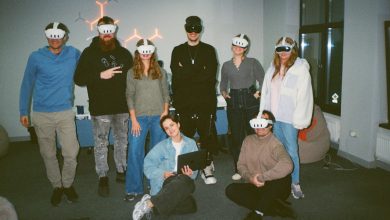
Today’s hospitality operator lives inside a labyrinth of systems. One tool manages the point of sale. Another handles scheduling. A third takes reservations. Then come inventory, reviews, accounting, events, and analytics. Each with its own login, interface, and export button.
This isn’t strategy. It’s survival through software.
Over time, even tech-forward restaurants accumulate stacks that don’t talk to each other. Integration might exist, but it varies from product to product. Some tools connect easily. Others don’t connect at all or only share data in limited, rigid ways. Dashboards turn into digital graveyards: full of reports, low on relevance.
That’s where AI steps in.
From Data Exhaust to Operational Insight
AI isn’t just about automation. It’s about orchestration. The ability to turn a noisy mix of disconnected metrics into a single operational narrative.
Where most tools deliver data, AI delivers context. Instead of telling you how many covers you had last night, it tells you why service slowed down. Instead of showing sales by server, it flags patterns in guest sentiment that predict churn.
It transforms raw data into usable insight and insight into action. And it does so not by replacing human decision-making, but by sharpening it. What once took a full post-mortem meeting now takes a single AI-powered dashboard. Patterns emerge that even the sharpest shift lead could miss, especially those that span weeks or connect seemingly unrelated data points.
Consider:
– A shift in guest tone from 5-star reviews to “food was great, service was slow”
– Labor logs that show two new hires consistently struggle on Wednesdays
– A weather API that predicts storms on your biggest outdoor brunch day
Individually, these are interesting. Together, they tell a story that used to live in a manager’s head, buried beneath years of intuition and experience. With AI as the connective tissue, that story becomes a shared source of truth. It’s how insight turns into strategy and strategy turns into stronger service on the floor.
The AI Operator Is the New Hospitality Archetype
Traditionally, operators were rewarded for muscle memory. You knew the rhythm of your dining room, the quirks of your team, the pulse of your guests. You relied on intuition honed by repetition. But as tech becomes integral to execution, a new archetype is emerging: the AI operator.
This leader doesn’t need to write code. They need to ask better questions of their systems. They don’t manage reports. They manage relationships between data points and know which questions unlock clarity instead of complexity.
Where a traditional GM reviews labor percentages, an AI operator models scenarios. What happens if we shift the floor chart by 15 minutes? If the forecast calls for rain, should we reduce staff or offer cover incentives? Should we adjust prep sheets, or anticipate a spike in delivery demand instead?
AI enables more granular, proactive decision-making. The kind that used to rely on gut instinct but now scales across locations. It transforms GMs into strategic collaborators with finance and marketing, helping identify patterns in spend, guest behavior, and promotion performance.
More importantly, it allows leaders to zoom out when needed. Instead of troubleshooting the same issue over and over, the AI operator builds feedback loops that eliminate the issue altogether. They aren’t just fighting fires. They’re redesigning the matches.
AI Isn’t the Future of Hospitality. It’s the Present Tense.
The hospitality industry has historically been slow to adopt transformative tech. POS systems took years to standardize. Inventory platforms rolled out unevenly. Even online reservations were met with resistance at first.
But the AI curve is moving faster. Much faster.
Operators using AI-enhanced tools are already seeing real outcomes: decreased turnover, increased labor efficiency, faster onboarding, more resilient forecasting, and even improved guest satisfaction scores.
A recent report found that AI-driven scheduling, prep optimization, and task automation can increase labor efficiency by up to 20 percent in multi-unit restaurant settings. These systems don’t just streamline. They scale.
These aren’t hypotheticals. They’re happening in the field, in independent concepts and multi-unit groups alike. AI is quietly reshaping hiring, training, prep, scheduling, and service flow. Not with fanfare, but with focus.
Ignore it, and you’re not just falling behind. You’re opting out of the evolution. This isn’t about shiny features. It’s about building businesses that learn, adapt, and grow in real time.
The future has already checked in. The only question is whether your operation is ready to serve it.
What Makes an AI-Ready Operation?
Becoming AI-ready doesn’t mean throwing out your systems. It means reframing them as collaborators in a shared conversation, not a set of isolated checklists. Each tool in your stack should inform and support the others, even if they weren’t originally built to do so.
Start by asking foundational questions:
– Do our systems talk to each other?
– Can we access clean, structured data?
– Who is responsible for translating insight into action?
– What decisions do we still make based on habit, not evidence?
– Where are we consistently reacting instead of proactively adjusting?
Being AI-ready also means fostering a team culture that is curious, not fearful, of data. That includes creating time to explore new tools, assigning ownership of digital transformation, and shifting expectations. Move from running reports to uncovering answers.
The most successful operators don’t replace the human touch. They enhance it with systems that think with them, not for them. They train teams not just to react, but to anticipate. They build processes flexible enough to evolve as the data does.
Tech Without Tension: Humanizing the Stack
Here’s the paradox: the more intelligent your systems become, the more human your team can be. When technology reduces friction instead of creating it, your people are freed to do what they do best. They can lead with empathy, adapt in real time, and deliver moments that guests remember.
With AI flagging inconsistencies, you free managers to coach, not just correct. With predictive scheduling, you reduce burnout before it starts. With smart inventory alerts, you waste less and serve more. And when your systems surface problems early, whether it’s rising food cost, a drift in service standards, or underperformance on the floor, you can intervene thoughtfully, not reactively.
Technology should serve hospitality, not dilute it. The strongest tech stacks disappear into the flow of service. AI, when used well, doesn’t feel like surveillance. It feels like support. Like your team is finally backed by a system that sees what they see, and what they might miss.
The future of hospitality isn’t sterile. It’s sensitive. Less screen time, more service. Less guesswork, more grace. AI is what makes that possible.
Final Thought: The Operator as Architect
The question isn’t whether AI fits into hospitality. It already does. It’s embedded in the tools we use, the forecasts we trust, and the insights we rely on to make better decisions.
The real question is: Who in your organization knows how to harness it? Who’s stepping into that role of translator, strategist, and bridge between tech and team?
In a world where insights can come faster than instinct, operational leaders must evolve into systems thinkers. They must stop waiting for someone from IT or finance to make sense of the numbers. The strongest brands won’t be the ones with the most tech. They’ll be the ones that make the most of it with intention and discipline.
When operators treat tech not as a layer on top but as a frame underneath their decision-making, everything shifts. Service tightens. Labor aligns. The business becomes more resilient. Not because it’s high-tech, but because it’s high-awareness.
Not louder. Smarter. Not busier. Better.
And for that, operations can no longer sit on the sidelines.




